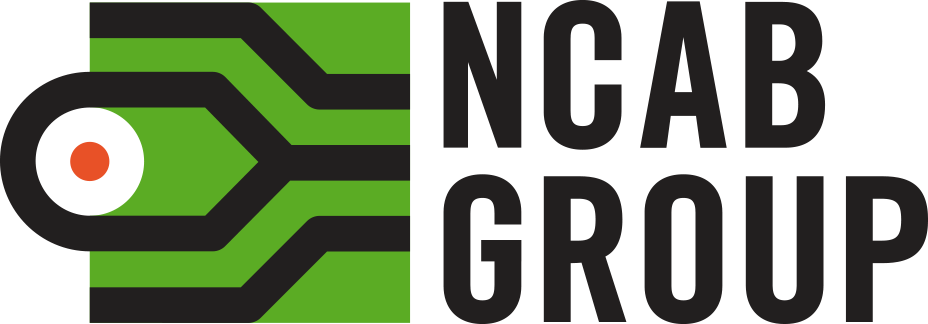TECH BASICS: LESSON 5
5) Are PCBs printed?
Read the video transcript below the video, or download all video transcripts in this course here.

Conductors: Materials that allows electrons to pass through. In PCBs, conductors connect components.
Insulation: Materials that do not allow electrons to pass through.
Vias: Vertical holes in a PCB. They let electrons move between layers.
Resistance: A measurement of how hard it is (or not) for electrons to move in
a conductor.
To plate: To apply a thin layer of metal.
Transcript
5) Are PCBs Printed?
Here’s a question:
Are PCBs – (LÄS SAKTA!) Printed Circuit Boards – (LÄS SOM VANLIGT!) printed? The name indicates that they are, doesn’t it? And in a way it’s true! The method we use to create conductors resembles screen printing. So, what are conductors again?
In PCBs, conductors connect components, like tiny cables.
Now back to printing. Screen printing is when you protect a paper with a screen before you apply paint. See? Everything protected stays white, so you get the pattern you want.
Now we look at the PCB. You know that the core has a copper foil on top, and this foil will become our conductors.
The PCBs design is projected on the copper. Areas that will become conductors are protected, and the rest of the copper is etched away. When the protection is removed, you can see that everything protected stays copper.
In reality, it’s a bit more complex, but the principle is like this. In every copper layer, copper that’s not needed for conductors is etched away. What’s left are very thin and very precise conductors, layer by layer.
Customers will place their components on the outer layers of PCBs, so we prepare for that. Every component has two dedicated places, called pads. Pads lead electrons between the component and conductors in the PCB.
Customers use soldering to fasten components to PCBs. It works like this:
A small bead of solder paste, a small tin ball, is placed for each connection. (This is the same thing seen from the side.) Then the component is put on its pad.
When all components are in position (I’m just showing one here, but you get the idea), the whole thing goes into an oven. The solder paste melts and sticks to both the PCB and the component. Afterwards, when it cools again, it’s a solid metal connection. Now the component is securely fastened, and electrons can pass through easily.
Since customers are always trying to save space, it’s smart to use materials that have more than one function. Soldering serves both as a glue and a conductor.
Soldering components is the customer’s job, and our job is to make their job as easy and precise as possible. We know that the solder paste goes fluid in the oven, and it must be stopped from flowing all over the place. That’s why we apply a soldermask – an insulator that protects areas where we don’t want connections. Electrons are only allowed to go where we want them to.
